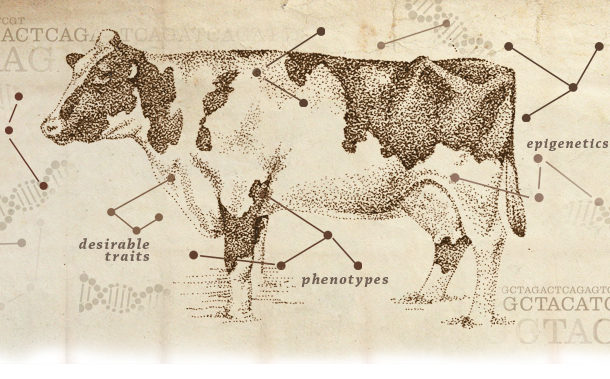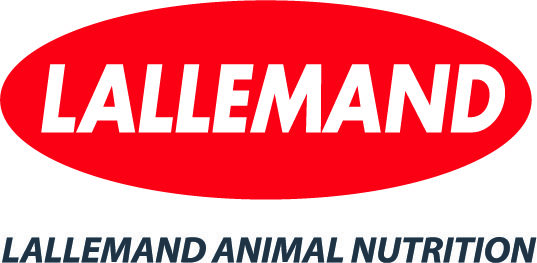Between the 1930s and 1960s, agriculture has seen the introduction of great innovations such as classical genetics, A.I., semen cryo-preservation, estrus synchronization and embryo transfer (ET).
It is not before the 1980s and 1990s that we witnessed the next generation of biotechnologies that revolutionized the ET world – ultrasonography, embryo freezing and sexing, in vitro fertilization (IVF), cloning and semen sexing.
Finally, it is in the 21st century that we witnessed yet another innovation that has revolutionized the agricultural business – genomics.
Currently, IVF is becoming a more commonly used tool for dairy producers to accelerate genetic progress, but this is just the tip of the iceberg. Gene editing and epigenetics may be the next advancements to revolutionize the dairy industry.
IVF impact continues to grow
The bovine industry remains a niche that uses assisted reproductive technologies extensively to propagate genetics. Between 1997 and 2015, we have witnessed a significant use of IVF to produce bovine embryos.
In fact, in 2014, according to the International Embryo Technology Society, over 1.2 million transferable embryos were produced worldwide, and 49 percent of these were produced using IVF. As a comparison, in 1997, only 8 percent of the embryos produced worldwide were of IVF origin.
There are four mains reasons why IVF is, and will continue to be, used extensively.
- IVF systems and media have improved significantly over the last 10 years. With current IVF platforms, it is possible to convert oocytes (eggs) to embryos at average rates of 40 to 50 percent, and of the embryos produced, more than half can be frozen using conventional freezing protocols identical to those used for in vivo embryos from flushes (direct transfer).
The only caveat here is that different IVF companies offering commercial services are not using identical media, and procedures and clients should ask the IVF companies what the expected rates are within their systems.
- Sexed semen works very well in IVF, resulting in comparable rates to conventional semen. It is also possible to sex frozen-thawed conventional semen, making it possible to use almost every bull available. By combining sexed semen with IVF, more than 90 percent of the embryos will be of the desired sex (male or female).
- IVF permits an owner to accelerate the genetic gain between generations by producing many more embryos when compared to flushing or A.I. In a 45- to 60-day period, it is possible to perform one flush or four IVF cycles using superovulation of donors.
As sexed semen works significantly better in IVF than flushes, an owner can expect to produce five to six times more embryos of the desired sex using IVF. Furthermore, by knowing the genomic potential of top cows or heifers in a herd, an owner can use IVF to mate these donors with different elite bulls.
Owners can then use females with the lowest genomic values as recipients, increasing rapidly the genetic level of their herds.
- Satellite OPU (ovum pick-up) centers are opening up in many different locations across North America. These centers permit trained veterinarians to aspirate oocytes and send these to IVF laboratories to produce IVF embryos.
Once produced, the embryos can be frozen or sent back fresh to be transferred in the owners’ recipients. Owners do not have to send donors to IVF centers, thus saving on travel and housing costs, not to mention diminishing the stress on animals.
The future: gene editing and epigenetics
Now that scientists have sequenced the entire bovine genome, it is possible to dream of going beyond genomics. One of these technologies is gene editing.
Put simply, gene editing (or genome editing) is a molecular procedure that permits insertion, deletion or replacement of DNA at specific sites in a genome using tools that could be described as “molecular scissors.”
Therefore, when nature has modified a unique sequence (or natural mutation) in the bovine genome that results in an interesting phenotype (like the polled gene), gene editing now permits embryologists to use these “molecular scissors” to replicate in any embryo the desired phenotype, even if the sire and dam that produced the embryo in question did not have this sequence.
Furthermore, the progeny that now expresses the desired phenotype will pass it on to the next generations, as it now is a carrier for this trait.
On the other hand, when nature made a modification in the genome that resulted in an undesired trait (like BLAD), it is now possible to imagine strategies to use gene editing to remove an undesired trait in an elite genetic line of interest.
The take-home message here is: Science now has a tool that can modify a genome in a very specific and precise manner, offering unique opportunities to bring in natural phenotypes that are of interest, or eliminate undesired phenotypes, in any genetic line-up.
Genomics now permits users to increase the chances of integrating potential genes linked to traits of interest. However, science now has demonstrated that if the animals are not in the ideal environment, the genes in question may not be “turned on.”
This is known as epigenetics. Epigenetics is the science that studies the additional information that is layered on top of the DNA, which will instruct the organism if certain genes are expressed (“turned on”) or not.
As an example, epigenetics will explain why identical twins are not actually identical. The scientific community is developing tools that will permit us to monitor the epigenetics of different animals in addition to their genomics.
This way, it may be possible in the future to indicate to an owner not only if the animal has high chances of possessing the genes that are linked to desired phenotypes, but if the epigenetics profile is adequate to allow the expression of the phenotypes.
In conclusion, it is the development of technologies as described here that will continue to assist farmers to build sustainable and profitable businesses. As more countries are faced with the challenges of feeding a growing world population, agriculture will play an important role in these challenges.
Technological advancements in genetics and reproductive biology will be crucial to equip farmers with the tools needed to face these challenges. ![]()
Illustration: Thanks to practices like in vitro fertilization, dairy cattle genetics are advancing at a more rapid pace than ever before, but two newer technologies could take this to an entirely new level. Illustration by Corey Lewis.
Patrick Blondin is a Director of Research and Development with The Semex Alliance. Email Patrick Blondin.









